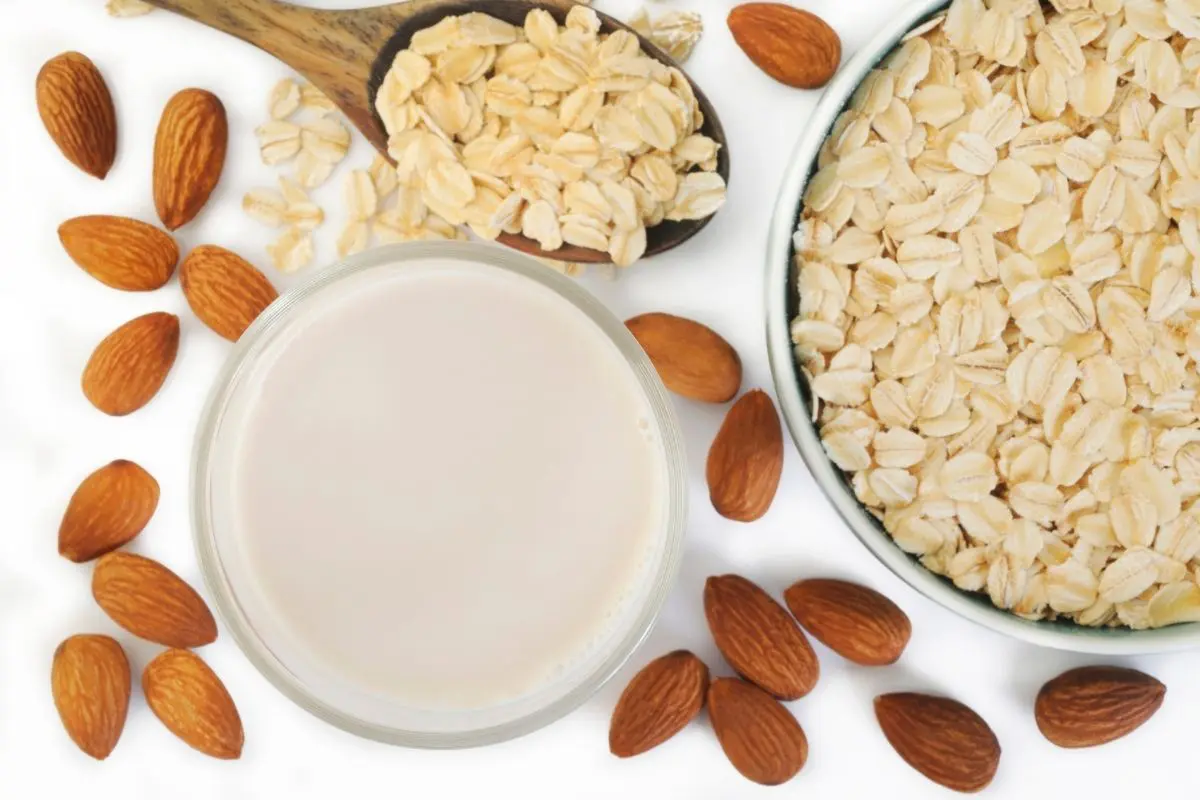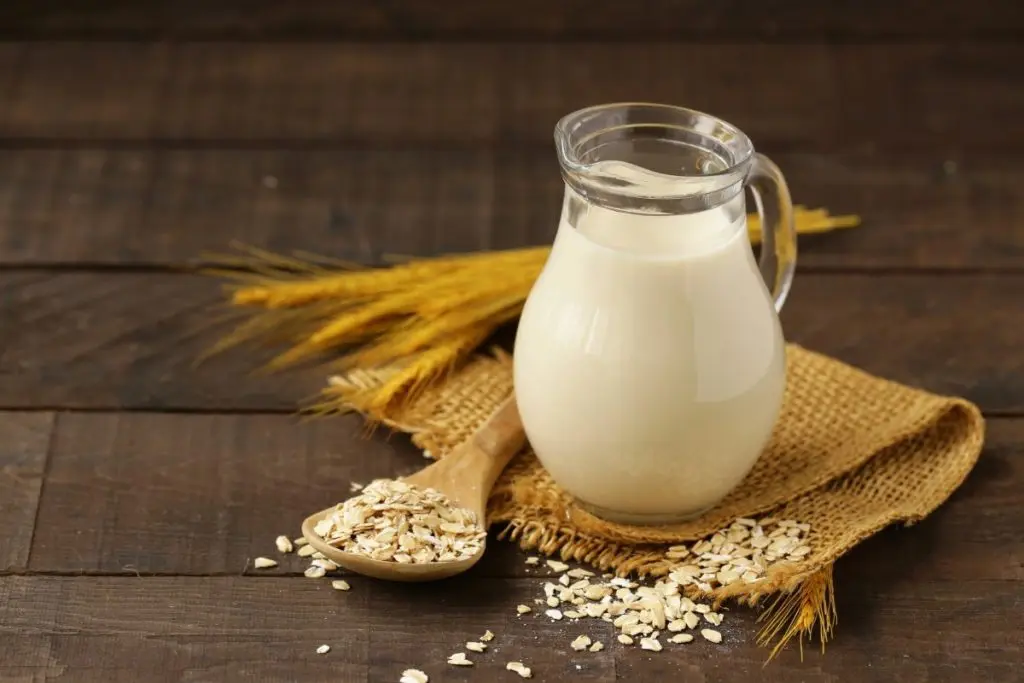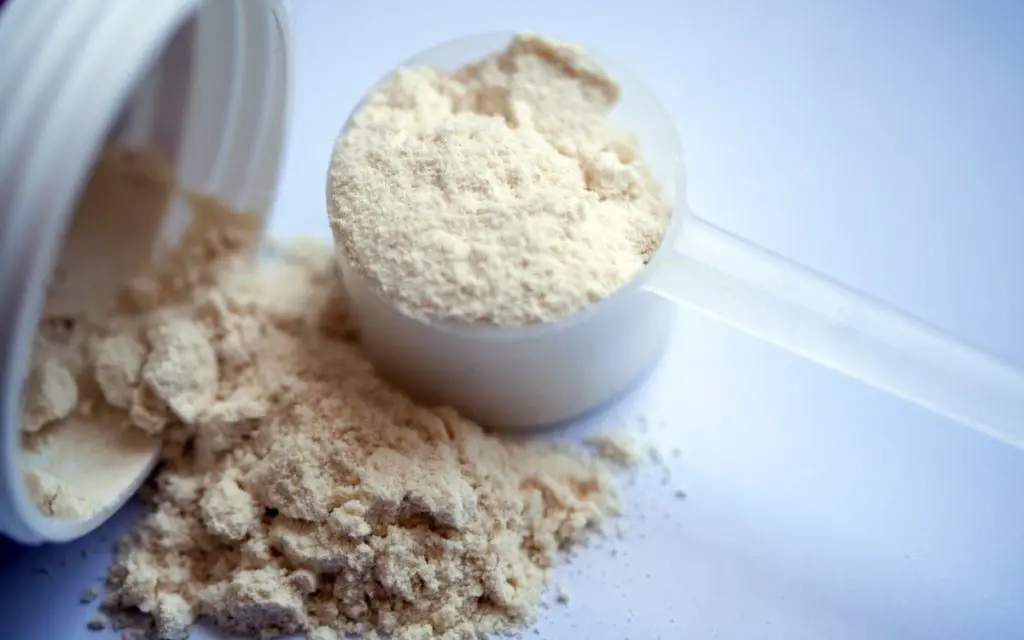Oat milk vs. almond milk are two of the most popular non-dairy alternative milk options. They each come bearing a set of unique characteristics that set them apart from the other. When it comes to determining which is better for you, there are several factors to consider. Ultimately, you should make a choice that is the best for your body.
Suggested further reading:
- Benefits and Disadvantages of Oat Milk
- 8 Best Oat Milk Brands: Old and New Brands Making the Most of the Oat Milk Trend
- Oat Milk Facts: Everything You Need to Know About Oat Milk and FAQ
To make your decision a little bit easier, we’ve compiled a list of the pros and cons of oat milk and almond milk. We’ll look at which has the higher nutritional value, which tastes better, which is better for the environment, and much more. If you’ve ever wondered if you should drink almond milk or oat milk, keep reading for everything you need to know.
| Oat Milk | Almond Milk | |
| Price | ✓ | |
| Nutrition | ✓ | |
| Taste | ✓ | |
| Sweetened vs. Unsweetened | ✓ | |
| Calories | ✓ | |
| Environment | ✓ | |
| Homemade | ✓ |
What’s the Difference Between Oat and Almond Milk?
The most significant difference between almond and oat milk comes down to their ingredients. Just as the name suggests, almond milk is made from squeezing the juice from almonds, and oat milk is made from the same process except using oats. Almonds and oats naturally have different health benefits that are carried over to their milks. They also require different sets of environments to grow well. Take a look at almond milk vs. oat milk.
Oat Milk Vs. Almond Milk

1
Price
It’s no secret that plant-based milks are more expensive than traditional cow’s milk. Their manufacturing process is longer and requires more resources. However, when you break down the different kinds and brands of non-dairy milks, they do tend to vary in price. Almond milk typically costs about $4.30 a gallon, whereas oat milk will usually be priced at just over $5 per gallon. Both kinds of milk can usually be found in a cardboard box in the pantry section of grocery stores and chilled in the dairy refrigerator section. While oat milk is more expensive, it does tend to have a longer shelf life than almond milk.
Verdict:
Almond milk is the less expensive option
2
Nutrition
One of the main reasons people consume milk is to make sure their bodies are getting enough calcium and protein. Both almonds and oats have some degree of natural protein, but most brands will fortify their products to add calcium. Almonds are higher in protein than oats. They also have more healthy fats and vitamin E. Oat milk does have slightly more fiber, which lends to a reasonable amount of protein. As long as whatever brand you’re drinking fortifies their beverage, both oat milk, and almond milk have about the same amount of calcium. To ensure you’re getting the maximum amount of nutrients possible, make sure the brand of almond milk or oat milk you’re drinking is fortified.
Verdict:
Almond milk is higher in protein
3
Taste
Oat milk rose in popularity because its consistency bears a striking similarity to that of cow’s milk. It’s thick and creamy with a rich flavor. People love to rave about drinking oat milk plain. On the other hand, almond milk tends to have a more watery texture. It works better for smoothies and cereals but is less ideal for drinking straight from the glass. Oat milk froths far better than almond milk, making it better equipped for lattes or other espresso drinks. All considered, oat milk is the option that is more desirable in taste and texture.
Verdict:
Oat milk offers a better taste
4
Sweetened vs. Unsweetened
Both almond milk and oat milk offer variants that are sweetened and unsweetened. Sweetened alternative milk does tend to be higher in sugar, which is less ideal for those trying to lose weight. Unsweetened oat milk may be less tasty to drink straight than sweetened oat milk. However, if you’re mostly planning to use your non-dairy milk in smoothies or cereal, an unsweetened version is completely fine as you most likely won’t be able to taste a difference. When it comes to drinking the healthiest version of almond milk or oat milk for your diet, stick with the unsweetened options.
Verdict:
Unsweetened for both
5
Calories
A one-cup serving of oat milk has about 130 calories, whereas the same amount of almond milk has less than half that amount. The calories of each product increase if it is sweetened or flavors are added. If you are seeking the version with the lowest amount of calories, stick with unflavored, unsweetened almond milk.
Verdict:
Almond milk has fewer calories
6
Environmental Impact
Many people consider drinking a non-dairy milk alternative to minimize their impact on the environment. Cows require an innumerable amount of resources to maintain. However, it might come as a shock that almonds also need large amounts of resources. Almonds require a lot of water to grow. It’s estimated that one almond uses 3.2 gallons of water. When you consider how many almonds are needed to manufacture almond milk, a lot of water is being used per carton. Oats require fewer resources to grow and are generally more plentiful than almonds. The oat milk manufacturing process is also shorter than almond milk.
Verdict:
Oat milk has less impact on the environment
7
Homemade
Making oat milk and almond milk at home can be more cost-effective than buying the product straight from the grocery store. They both require roughly the same process. For oat milk, blend together rolled oats and water, then strain through a t-shirt or towel. You’ll generally find that traditional nut bags let too much pulp through. The steps are few, and the final result is a tasty beverage. Almond milk, on the other hand, requires that you soak the almonds overnight. The next day, you drain the water from the almonds before blending them and adding any additional ingredients. Pour the blended mixture through a nut milk bag and squeeze to get out all the liquid. Overall, making your own homemade oat milk needs fewer steps and less time.
Verdict:
Oat milk is easier to make
Which Is Better for You: Oat Milk or Almond Milk

When it comes to nutrition, almond milk vs. oat milk are quite different. Oat milk is higher in calories, carbs, and sugar. Almond milk is low in fiber and high in fat. For both beverages to have any calcium, they must be fortified by calcium and other essential vitamins. Almond milk is naturally high in vitamin E, which lends itself to a healthy skin and immune system. Nutritionally-speaking, almond milk is healthier than oat milk, but not by much.
Now, when it comes to flavor and texture, oat milk easily wins out. Oat milk is naturally thicker and doesn’t require added gums as almond milk does. It’s ideal for coffee lovers looking for a non-dairy milk alternative that froths well to make their at-home lattes. Oat milk also has a longer shelf life than almond milk, so while it may be more expensive, it does tend to last longer.
Oat milk offers a fine alternative for those who can’t consume nuts and want to avoid cow’s milk. Fortified oat milk has enough health benefits to make it a worthy alternative for most diets. If you are monitoring your calorie or carb intake, almond milk might be your better option. Oat milk has more than twice the calories as almond milk and is higher in carbs. Whether you opt for oat milk or almond milk, it’s best to stick with the unsweetened version of each. This removes the potential for added sugar and sweeteners.
When choosing whether you should drink oat milk or almond milk, pay close attention to your body and diet. Each product offers a different set of nutrients that impact your body. With this information, you can make an informed and healthy decision.
Further Reading






